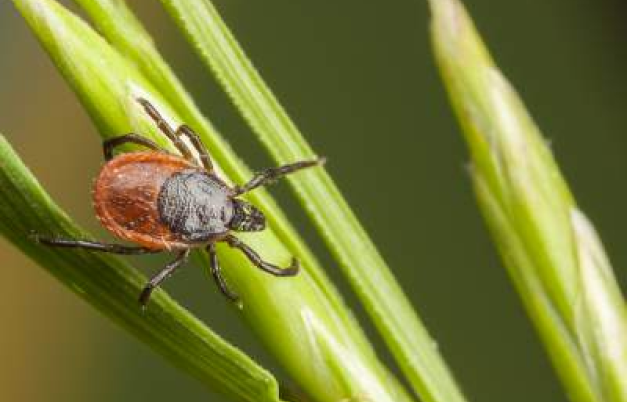Ticks are haematophagous parasites related to spiders and mites. Their life cycle consists of a passive stage (egg) and three active stages: larva, nymph and adult. For development to the next stage, the tick requires a blood meal. The entire development process takes place over a period of two to three years, during which each active stage seeds a hos once. Ticks typically sit on low vegetation such as low shrubs and grasses. When a potential host (human or animal) passes by, they attach themselves to it and then find a suitable place on the body to suck blood for several days. A blood-filled tick then drops to the ground to move on to the next stage after a resting period.
Some ticks are highly host specific and feed on a limited number of animal species. Other ticks, including the sheep tick (Ixodes ricinus), feed on a wide range of hosts, such as large mammals, rodents and birds. Humans are usually incidental hosts.
The adult sheep tick is brownish-black and pinhead-sized (a few millimetres). The larvae are very small and have six legs, while the nymphs are slightly larger and have, like the adults, eight legs. The body of the tick is round or oval and flat (seen from the front). Blood-filled ticks are almost spherical.
